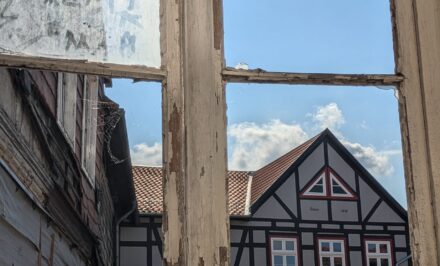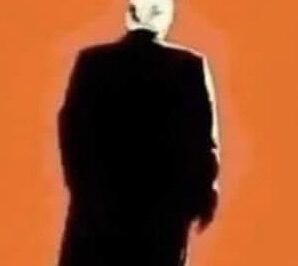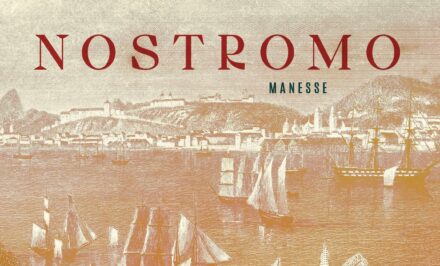 „You can do powerful things with a few sticks and bones“
„You can do powerful things with a few sticks and bones“
John Harvey on Peter Temple’s „The Broken Shore“
Es ist die wohl ambitioniertest Anthologie der Kriminalliteratur. Nicht von ungefähr trägt sie den Titel “Books to Die For”, erschien 2012 mit dem Untertitel “The World’s Greatest Mystery Writers on the World’s Greatest Mystery Novels“. Die irischen crime-Autoren John Connolly und Declan Burke (zuletzt bei uns “The Big O” bei Nautilus) haben hier ein Riesenprojekt gestemmt: 119 der besten crime-Autorinnen und -Autoren aus 20 Ländern schreiben über die Kriminalromane, die sie am meisten lieben.
Die sehr persönlichen Essays sind Versuche, der Arbeit großer Kolleginnen und Kollegen gerecht zu werden, gleichzeitig sind sie auch eine Selbstauskunft. David Peace schreibt über Hammetts „The Glass Key“, Joe R. Lansdale über Chandlers „Farewell, My Lovely“, Megan Abbott über Dorothy B. Hughes‘ „In a Lonely Place“, Adrian McKinty über Patricia Highsmiths „Strangers on a Train“, Deon Meyer über Ed McBains „Ten Plus One“, Mike Nicol über James McClures „The Steam Pig“, Ken Bruen über Donald Goines‘ „Daddy Cool“, George Pelecanos über Newton Thornburgs „Cutter and Bone“, Dennis Lehane über Crumley „The Last Good Kiss“, Ian Rankin über Derek Raymonds „I Was Dora Suarez“ – und unser Kolumnist John Harvey über Peter Temples „The Broken Shore“.
Seinen Text veröffentlichen wir hier mit freundlicher Genehmigung von Declan Burke und John Connolly. Mit John Harveys letztem, jetzt auf Deutsch erschienenem Charlie-Resnick-Roman, „Unter Tage„, hat Alf Mayer sich im Oktober-CrimeMag beschäftigt. “Books to Die For” ist jetzt Ende Oktober 2016 bei Simon & Schuster als erschwingliches Trade Paperback erschienen: 560 Seiten stark, bei Atria/Emily Bestler Books, $ 17.00. Hiermit dringlich empfohlen.
Und hier nun John Harvey über seinen australischen Schriftstellerkollegen Peter Temple und dessen großen Roman „The Broken Shore“ (2005, dtsch als „Kalter August“, 2007). Peter Temple ist seit „Wahrheit“ (Truth, 2008; dtsch. 2011) verstummt. Seit Zweitling „Die Schuld vergangener Tage“ (An Iron Rose) ist gerade erst auf Deutsch zugänglich geworden (CM-Kritik hier). Wie John Harvey ist es auch der Redaktion CrimeMag ein Anliegen, diesen großen Autor im Gedächtnis zu halten.
 Peter Temple „The Broken Shore“, by John Harvey
Peter Temple „The Broken Shore“, by John Harvey
It begins calmly enough, a cold morning in late autumn; a bloke out walking his dogs, routine. Time to notice the last leaves on the maples before the call from the station, an intruder, a woman living alone. He felt the fear rising in him like nausea. Cashin. Melbourne police, homicide, put out to grass. This, or something like it, has happened before. Darkness, danger, blood puddling on tarmac, in corners, life leaking away. Another phone call, fast after the first, fast as night follows day: a rich old man found face down, his naked back lined with stripes of dried and drying blood. Nothing as simple as a robbery gone wrong: nothing simple here at all.
Conspiracy in Peter Temple’s novel creeps up on you as conspiracy should: wealth, power, the power to corrupt, the sweet stench of it echoing back to Chandler’s “The Big Sleep” and another rich old man, living out a living death in a hot house of orchids, the cloying smell of their flesh too much like the flesh of men, ripe with decay.
Cashin thought there was no firm ground in life. Just crusts of different thicknesses over the ooze.
A decent man, Cashin, not above mistakes, mistakes that have taken the lives of others, good and bad, foe and friend. Mistakes that, like the enduring pain from injuries incurred, he can never forget.
“A man going forward while looking back,” said Cashin. “I know that feeling.”
Going forward, looking back. Cashin’s father died when he was twelve and his mother packed two suitcases and, for three years, took him with her on the road. Gone walkabout. Shacks, rented rooms, motels. Ever since, without perhaps acknowledging it, he has been looking for a father, looking for a home. Desperate for the sight of his own unacknowledged son.
All he wanted was to see him, talk to him. He didn’t know why. What he knew was that the thought of the boy ached in him like his broken bones.
Right now, Cashin is living in the lee of a memory he is trying, with the aid of a swagman he’s befriended, literally, to reconstruct – the grand palace of a house his great-grandfather’s brother built then dynamited to the ground. Something of a lesson there, you might think: a moral.
But if the family home Cashin is intent on rebuilding is one of the book’s organising metaphors, the other – more dynamic, more central – is the Broken Shore of the title and the Kettle at its violent heart, within which the water rips and tears.
They went to see it for the first time when he was six or seven, everyone had to see the Kettle and the Dangar Steps. Even standing well back from the crumbling edge of the keyhole, the scene scared him, the huge sea, the grey-green water skeined with foam, sliding, falling, surging, full of little peaks and breaks, hollows and rolls, the sense of unimaginable power beneath the surface, terrible forces that could lift you up and suck you down and spin you and you would breathe in icy salt water, swallow it, choke, the power of the surge would push you through the gap in the cliff and then it would slam you against the pocked walls of the Kettle, slam you and slam you until your clothes were threads and you were just tenderised meat.
It was called the Broken Shore, that piece of coast.
It is here that the body of one of the potential murder suspects is found; here that the teenage Cashin, full of lust and full of wonder, sat close and in awe alongside the young Helen Castleman, too beautiful, too rich, too far out his class – Castleman, who is now a lawyer working for the Aboriginal Legal Service on behalf of another suspect and the owner of a property neighbouring Cashin’s unbuilt dream. Here that Cashin’s father committed suicide.
And there is one further thing that, for this reader anyway, resonates from the title: the echo of Robert Hughes 1988 account of the founding of Australia, The Fatal Shore. For this novel is not just expertly set in a particular country – a particular area of country, a particular place –permeated by generations of history, it shows both the shifts and virtual disintegration of some communities, and the rabid racial discrimination – shockingly outspoken in some instances here – that demonises the Aboriginal people as belonging to a feral underclass.
When it was published, I was happy to be quoted as saying: “Put simply, Temple is a master, and The Broken Shore is a masterful book.” Nothing, in the four or five times I have read it since, has given me cause to change my mind.
What was it Raymond Chandler said about Dashiell Hammett? Something about him taking murder out of the Venetian vase and dropping it into the alley. No longer the candlestick in the library, but the sap to the back of the head going the wrong way up a dingy one-way street.
Real crimes committed by real people.
Chandler didn’t do a bad job of that himself.
Neither, closer to hand, did Maj Sjowall and Per Wahloo with their ten books featuring the Swedish policeman, Martin Beck; nor William McIlvanney in his brilliant and inspirational 1977 novel Laidlaw, set in Glasgow.
Whether Temple has read McIlvanney or Sjowall/Wahloo; whether he’s read George Pelecanos, say, or Walter Mosley, is neither here nor there. What is relevant is that they all utilise the crime novel in similar ways: telling a story, yes, and a story about people, some of whom, you come to care about, care deeply, but also – more importantly? – as importantly – they use it as a tool, a tool with which to open up and expose a small area of society for us to examine and understand.
I am drawn to the sparse and the dry and to the idea that if you concentrate you can do powerful things with a few sticks and bones.
Peter Temple’s own words.
The Broken Shore is very powerful indeed.
 (John Harvey, London, 26th March 2012; written for „Books to Die For. The World’s Greatest Mystery Writers on the World’s Greatest Mystery Novels. Edited by John Connelly and Declan Burke; New York/ London 2012; seit Oktober 2016 als Trade Paperback erhältlich.)
(John Harvey, London, 26th March 2012; written for „Books to Die For. The World’s Greatest Mystery Writers on the World’s Greatest Mystery Novels. Edited by John Connelly and Declan Burke; New York/ London 2012; seit Oktober 2016 als Trade Paperback erhältlich.)
The Broken Shore was adapted for Australian television by writer Andrew Knight and directed by Rowan Woods. Don Hany in the lead as Detective Joe Cashin gives a haunting, absolutely stunning performance. The movie is powerful and excellent. It aired in Australia on the ABC on 2 February 2014 and it well worth seeking out. DVD will have an Australian Region Code, not all players can cope with that. (AM)















